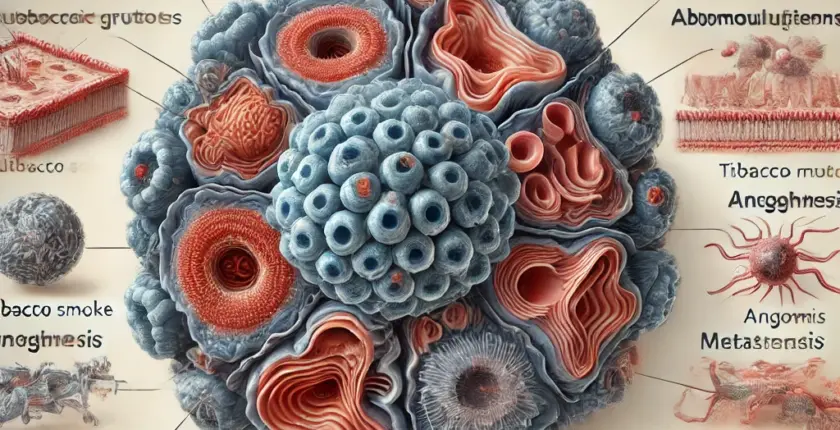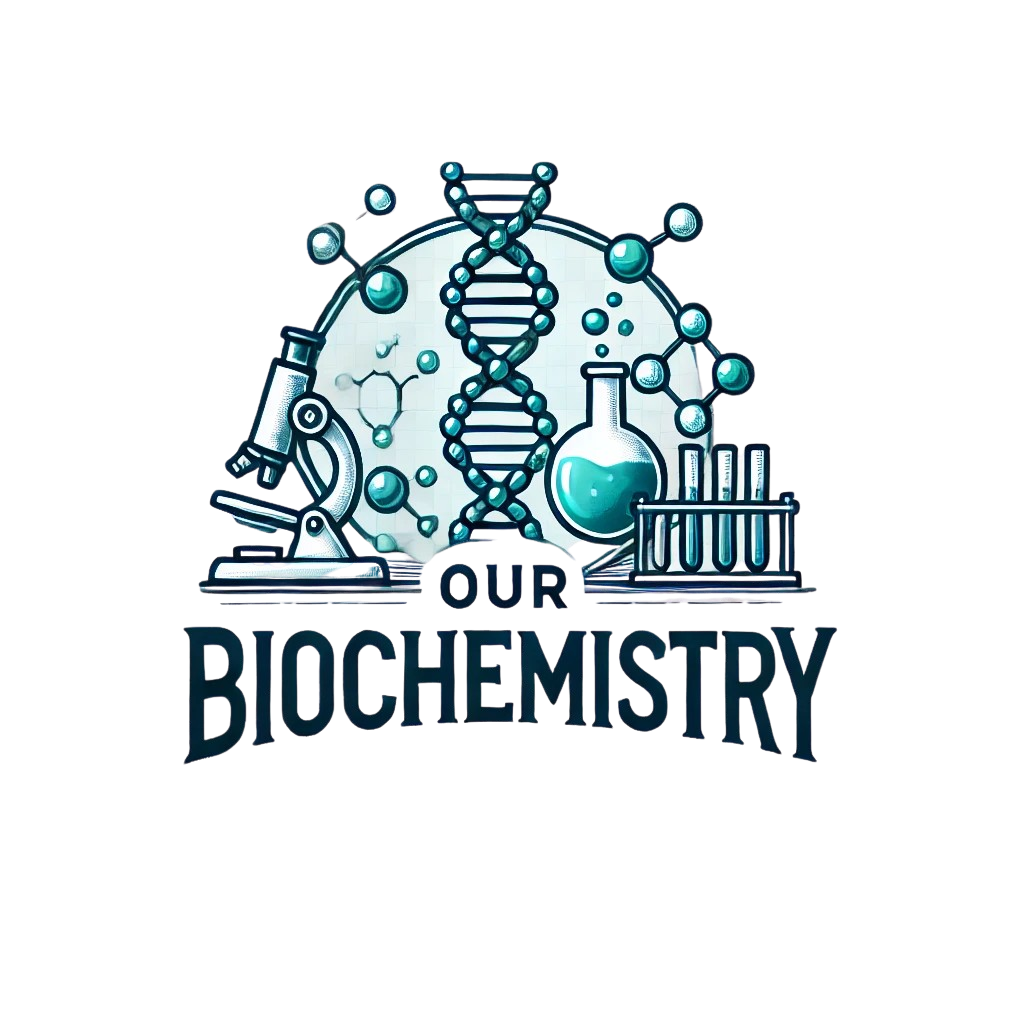Library
Cancer Development: Cellular Characteristics and Carcinogenic Factors
- February 25, 2025
- Posted by: Namrata Chhabra
- Category: Cancer Cancer Lecture notes Theory notes

Introduction
Cancer is a disease of uncontrolled cell growth, characterized by genetic mutations and altered cellular functions. Cancer cells differ from normal cells in their ability to proliferate indefinitely, invade tissues, and metastasize. The development of cancer (carcinogenesis) is driven by multiple factors, including genetic mutations, environmental exposures, and infectious agents.
This article explores:
✔ Key characteristics of cancer cells
✔ Biochemical and morphological changes
✔ Etiology of carcinogenesis, including radiation, chemicals, and viruses
Cellular Characteristics of Cancer Cells
Cancer cells exhibit distinct biological properties that differentiate them from normal cells:
1. Uncontrolled Growth and Proliferation
- Loss of cell cycle regulation – Mutations in tumor suppressor genes (e.g., p53, Rb) allow unchecked cell division.
- Evasion of apoptosis – Cancer cells resist programmed cell death through mutations in apoptotic regulators (e.g., Bcl-2, p53).
- Loss of contact inhibition – Normal cells stop growing when they touch neighboring cells, but cancer cells continue proliferating.
2. Invasion and Metastasis
- Loss of adhesion molecules (e.g., E-cadherin) → Enables cells to detach and migrate.
- Degradation of extracellular matrix (ECM) → Increased protease activity (e.g., MMPs, cathepsins) allows cancer cells to invade tissues.
- Angiogenesis – Tumors induce blood vessel formation by upregulating vascular endothelial growth factor (VEGF) to support growth and metastasis.
3. Metabolic Adaptations (Warburg Effect)
- Increased glucose uptake → Cancer cells preferentially use glycolysis even in the presence of oxygen (aerobic glycolysis).
- Enhanced anabolic pathways → Increased nucleotide, lipid, and protein synthesis to support rapid proliferation.
- Altered mitochondrial function → Reduced oxidative phosphorylation efficiency.
4. Altered Cellular Surface Markers and Antigen Expression
- Loss of normal surface antigens and expression of tumor-specific antigens (e.g., CEA, AFP).
- Altered glycoprotein and glycolipid composition → Changes in cell adhesion and immune evasion.
5. Genetic and Epigenetic Changes
- Oncogene activation → Mutations in genes like KRAS, MYC, and EGFR promote cancer growth.
- Tumor suppressor gene inactivation → Loss of function in genes like TP53, RB1, and APC removes cell cycle checkpoints.
- Epigenetic modifications → DNA methylation and histone modifications can silence tumor suppressor genes without mutations.
Etiology of Carcinogenesis (Causes of Cancer)
Carcinogenesis results from the accumulation of genetic damage, triggered by various carcinogenic factors:
1. Radiant Energy (Radiation-Induced Carcinogenesis)
✔ Ultraviolet (UV) Radiation
- Causes pyrimidine dimer formation → Leads to mutations in genes like TP53.
- Commonly associated with skin cancers (e.g., melanoma, squamous cell carcinoma, basal cell carcinoma).
✔ X-rays and Gamma (γ) Radiation
- Induce double-stranded DNA breaks, chromosomal translocations, and reactive oxygen species (ROS) formation.
- Seen in radiation-induced leukemia and thyroid cancer.
2. Chemical Carcinogens
Chemical agents cause cancer through direct DNA damage or metabolic activation.
✔ Direct-acting carcinogens – Bind DNA directly and induce mutations.
✔ Procarcinogens – Require metabolic activation via cytochrome P450 enzymes to become ultimate carcinogens.
Examples of Chemical Carcinogens
| Class | Examples | Cancer Type |
|---|---|---|
| Polycyclic hydrocarbons | Benzo(α)pyrene, Dimethylbenzanthracene | Lung, skin cancer |
| Aromatic amines | 2-Acetylaminofluorene, N-Methyl-4-aminoazobenzene | Bladder cancer |
| Nitrosamines | Dimethylnitrosamine, Diethylnitrosamine | Gastric cancer |
| Drugs | Alkylating agents (chemotherapy) | Secondary leukemia |
| Natural toxins | Aflatoxin B (Aspergillus) | Hepatocellular carcinoma |
| Inorganic compounds | Arsenic, Asbestos, Cadmium, Chromium, Nickel | Lung, bladder, skin cancer |
Mechanism:
✔ Procarcinogen → Metabolic activation (via Cytochrome P450) → Ultimate carcinogen → DNA damage
✔ DNA adduct formation → Mutations → Failure of repair mechanisms → Uncontrolled growth
3. Viral Oncogenesis (Cancer-Causing Viruses)
Some viruses contribute to cancer development by integrating into host DNA and disrupting normal gene regulation.
| Virus | Associated Cancer | Mechanism |
|---|---|---|
| Epstein-Barr Virus (EBV) | Burkitt’s lymphoma, Nasopharyngeal carcinoma | Activates MYC oncogene |
| Hepatitis B Virus (HBV) | Hepatocellular carcinoma | Chronic inflammation, DNA damage |
| Human Papillomavirus (HPV 16, 18) | Cervical, anal cancer | E6/E7 inactivate p53 and Rb |
| Human T-cell Leukemia Virus (HTLV-1) | Adult T-cell leukemia | Viral oncogenes disrupt cell cycle |
Mechanism:
✔ DNA viruses integrate into the host genome and alter gene expression.
✔ RNA viruses (Retroviruses) use reverse transcriptase to convert viral RNA into DNA, which integrates into the host genome.
Key Takeaways
✔ Cancer cells exhibit uncontrolled growth, invasion, and metabolic adaptations.
✔ Carcinogenesis results from genetic mutations triggered by radiation, chemicals, and viruses.
✔ The Warburg effect explains the shift to glycolysis in cancer metabolism.
✔ Oncogenes (e.g., MYC, RAS) promote cancer, while tumor suppressor genes (e.g., p53, Rb) prevent it.
Frequently Asked Questions (FAQs)
1. How does radiation cause cancer?
Radiation damages DNA directly (UV-induced pyrimidine dimers) or indirectly (ROS-mediated DNA breaks), leading to mutations in oncogenes or tumor suppressor genes.
2. What is the role of viruses in cancer development?
Oncogenic viruses integrate into host DNA, disrupt tumor suppressor genes, and promote chronic inflammation, increasing mutation rates.
3. What is the Warburg effect in cancer cells?
The Warburg effect describes how cancer cells prefer glycolysis over oxidative phosphorylation, even in oxygen-rich conditions, to support rapid proliferation.
Conclusion
Cancer develops due to genetic and biochemical changes that alter normal cellular regulation. Identifying the properties of cancer cells and the factors contributing to carcinogenesis is essential for understanding tumor biology and developing targeted therapies.
